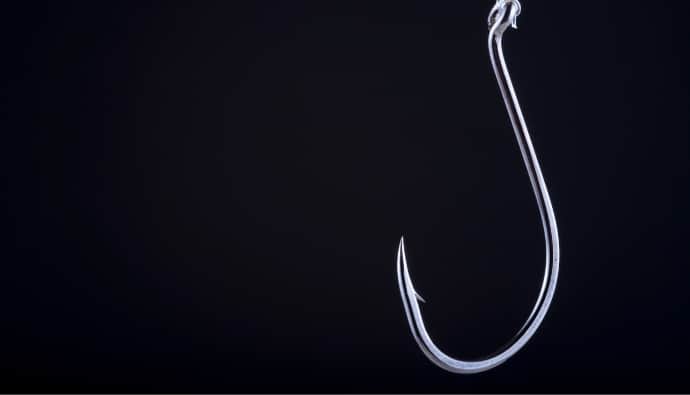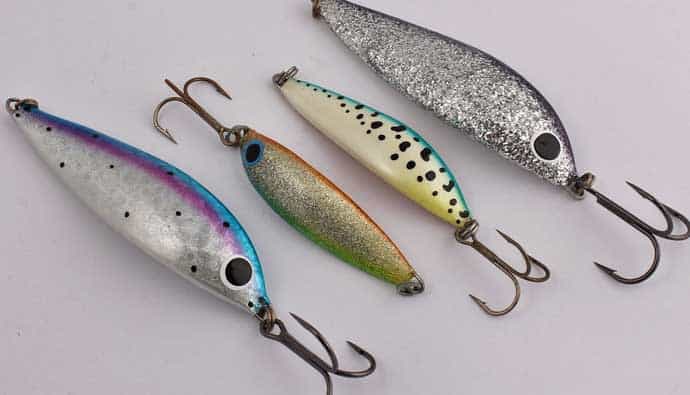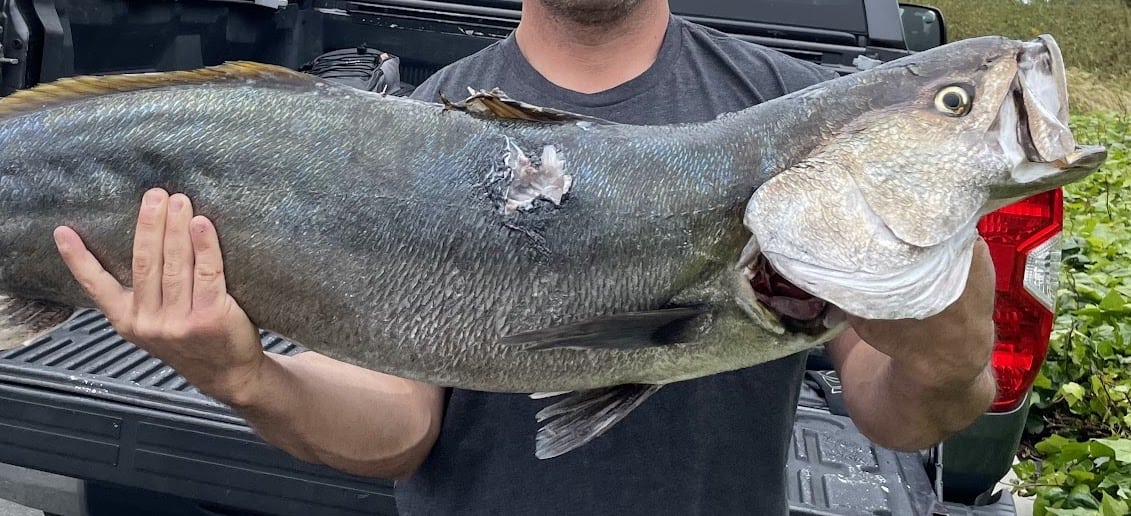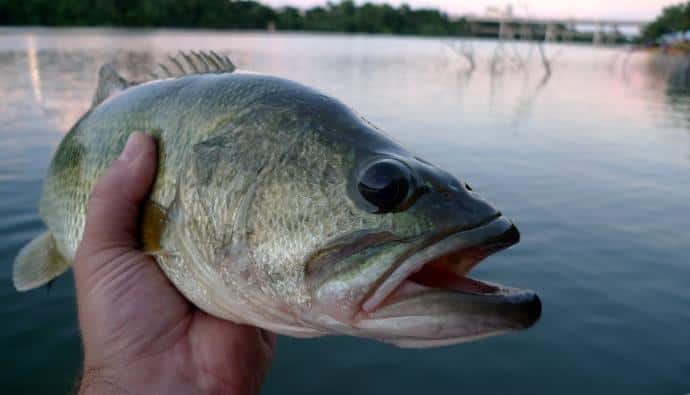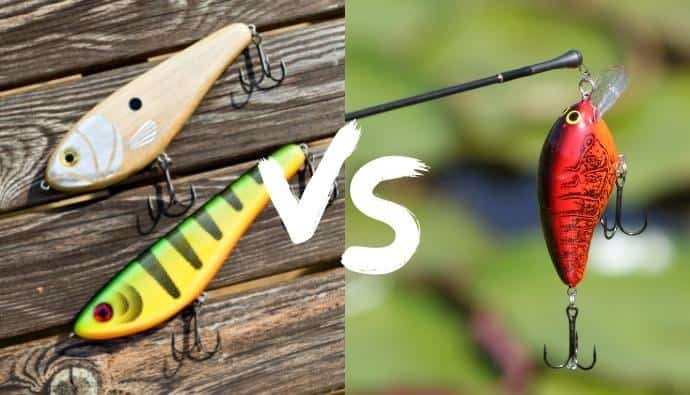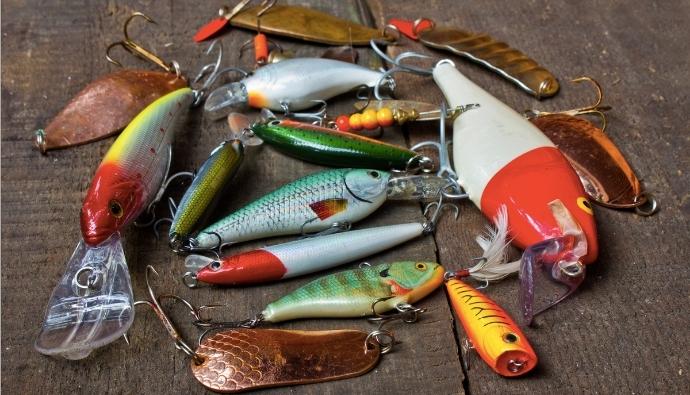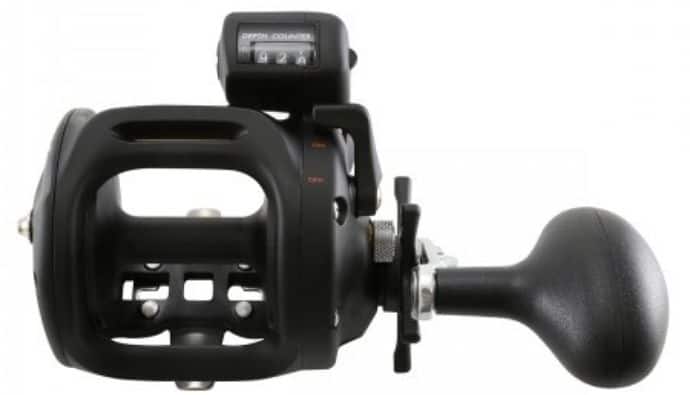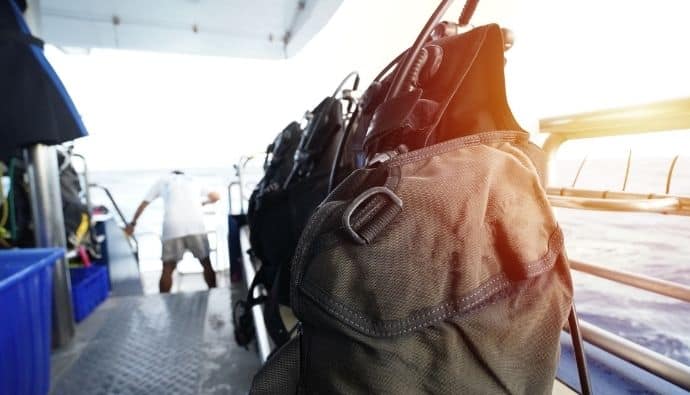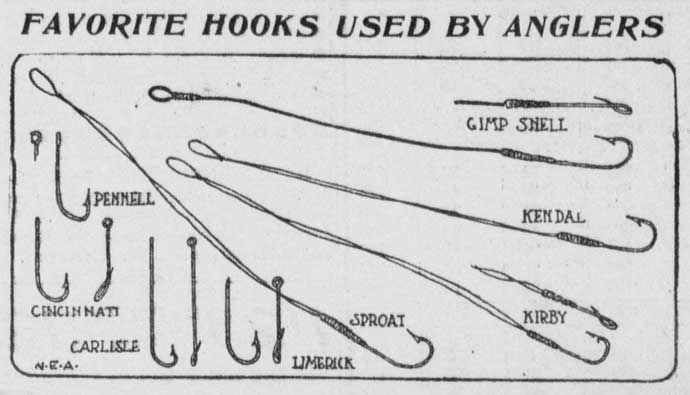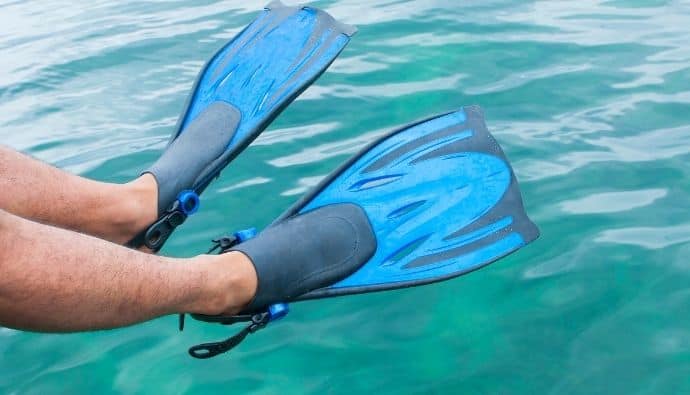When you’re fishing in your local lakes, rivers, or ponds, it is always good to know what the best freshwater lures and baits are for the fish you’re going after.
Today we will go over the best lures for bass, whether it’s largemouth bass, smallmouth bass, or spotted bass.
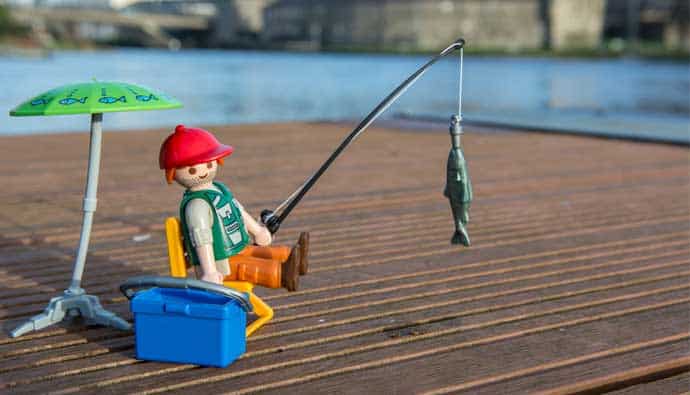
In this article, I am going to cover some of the best freshwater lures, how to use them and which we have found to work best.
How to Make the Best Freshwater Lures
Freshwater lures are made in the same way saltwater baits are made. There are soft plastic baits, hard baits, as well as wire baits (i.e., spinnerbaits, buzz baits, etc.)
Making Soft Plastic Lures
Soft plastic lures are made in a variety of methods. There are molds that the companies have that resemble the baits they are trying to make.
Mold Types
Whether it be open-pour molds, injection-type molds, or centrifugal molds, all of these mold types work very well to create a bait that resembles the type of bait you want to put in the water.
Once the manufacturers have the molds prepped and ready to go, they have to heat their plastisol mixture to around 330 degrees Fahrenheit.

Pouring the Plastic
Plastisol comes as a thin milky substance, but once it is heated to 330 degrees, a chemical reaction occurs between the PVC particles and plasticizers.
This makes the liquid become very thick. Then when it reaches the correct temperature, the liquid turns clear and thin again.
Adding Color and Attractants
At that point, the manufacturers add the color, glitter, and scent. When it is all mixed well, the colored plastisol goes into a vacuum chamber that sucks all of the air bubbles out of the plastic.
This is to make sure there is a good steady flow of plastic through their preferred method of pouring the plastic into the molds.
Removing the Molds
Once the plastic is injected into the molds, it is allowed to cool for at least a minute. Once the mold is opened, the baits are hung up the cure for at least a day or two.
When the baits are cured, they are trimmed and packaged into their respective bags and are then ready to be sold.
Making Hard Baits
There are many different ways that hard baits are made. There are wooden baits and plastic hard baits.
Wooden Hard Baits
The wooden baits are made one at a time and are honed out, sanded, and buffed to create the desired shape that the creator is trying to make.
Once the desired shape is created, the lure is sealed with a polyurethane film. Once the sealer is dried, then the lure is painted and sprayed with another coat of sealer,
At that point, the lure is affixed with all of the eyelets, hooks, bills, etc, that give the lure the desired action.
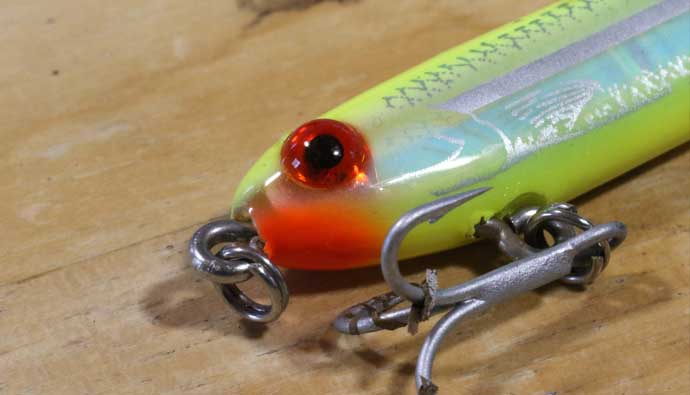
Plastic Hard Baits
The hard plastic baits are made of injection molded hard plastics formed in two halves.
This is to allow for an air cavity to keep the bait from sinking, although some are designed to sink. This also gives the opportunity to put ball bearings inside the baits to add vibration and sound to the bait.
After the bait is put together, it is sprayed with a sealer and then airbrushed. The color and pattern that is desired, then it is sealed again, the hooks are attached, and the bait is ready to go.
Making Wire Baits
Wire baits are some of the easiest baits made, and the process is simple.
The manufacturer has a hook that is not an eyelet but rather a piece of wire that extends a few inches past the actual shank of the hook.
What happens next is the hook has lead molded around the head of the bait to create the weight as well as the beginning portion of the bait.
Creating the Wire Bait Shape
After the lead is finished cooling and is cured, the wire is bent into the circle shape to attach your line then the blades and skirt are added.
Once that is completed, you simply add a trailer of soft plastic, and you are ready to go!
Different Types of Freshwater Lures
There are thousands of different types of freshwater lures to talk about, so we’re only going to cover the basic categories.
The categories include:
- worms
- soft plastic jerk baits
- paddle tail swim baits
- craw baits
- creature baits
- jigs
- jerk baits
- crankbaits
- lip-less crankbaits
- topwater wake baits
- topwater poppers
- topwater spooks
- topwater propeller baits
- topwater prop baits
- frogs
- and the list goes on.
Let’s go over plastic worms, craws/creature baits, topwater baits, and crankbaits.
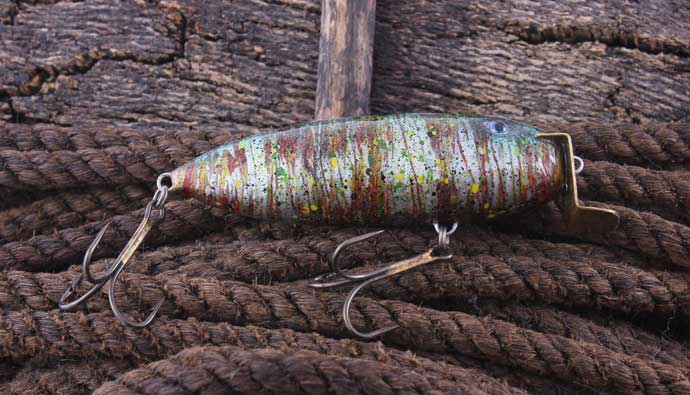
Freshwater Soft Plastic Baits
Soft plastic worms are a lure that will almost always catch a bass.
There are
- stick baits
- finesse worms
- curly tail worms
- ribbon tail worms.
The list goes on, but we will only go over these few today.
Freshwater Stick Baits
Stick baits are the epitome of the soft plastic worm. They have plenty of action and weigh enough to get from your freshwater rod to the piece of cover you want the lure to reach.
There are countless ways to rig them.
The most popular is the Texas Rig, which is a bullet weight on the line before your hook, and the hook embedded in the worm, making it weedless. This is so you can throw it in any cover or through any type of structure you come across.
Finesse worms
Finesse worms are a great worm to use when the fish are not wanting a bigger profile and are leaning more towards a smaller, easier target to eat. They can be rigged the same way as stick bait and are solid options for when the bite is hard!
Zoom makes a good finesse worm that will do you very well for getting that finicky bass to hit the worm!
Curly Tail Worms
Curly Tail worms are a great way to throw a finesse worm with added action at the tail of the bait.
Curly tail worms have a tail like a grub and come in many different sizes, which add to the choices you can make to rule out the smaller fish.
Curly tail worms can be rigged in a multitude of fashions, Texas rigging being the most popular.
All you have to do to get the curly tail worm to have a little action is to cast it out and let it drop, then hop it off of the bottom.
If the bass wants to eat moving baits, you can cast a curly-tailed worm out and do a slow retrieve back to you.
Powerbait also makes a great curly tail worm that’s cheap and effective.
Ribbon Tail Worms
Ribbon Tail Worms are a very versatile bait. You can cast them on a Texas rig, hop them off of the bottom, and even put them on a shaky head jig and bounce the bait around to attract even the most docile fish to bite!
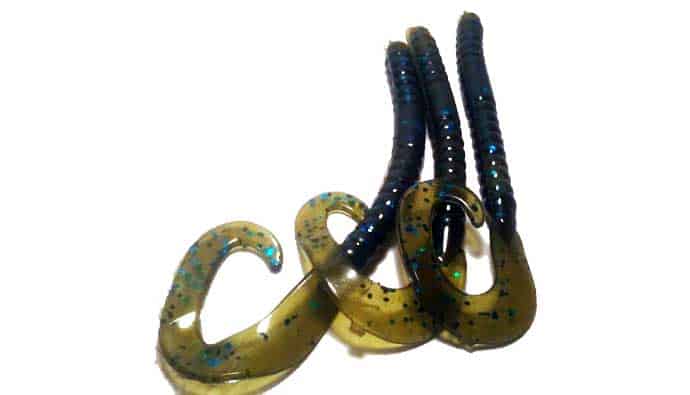
Backwoods Bait And Tackle make a great 7-inch ribbon tail worm that not only outperforms the competition. It even catches catfish!
These baits are only offered in one color, but with a quick message, they can make you the color you desire!
Craws/Creature Baits
Craws and creature baits are a very good way to imitate crawfish or other types of bugs and creatures that live in and around water. These are seen as food for certain fish.
Craws
Craws are a good way to imitate, well, you guessed it, crawfish. These are very valuable food items for largemouth bass and other predatory fish.
There are hundreds of manufacturers that make craw-type baits, and they are all essentially equal in the amount of action and fishability.
Craws can be rigged in countless different ways, including as a trailer on a jig. This is used for punching the bait into the cover in the hope of a fish eating the bait in the fall.
Creature Baits
Creature baits are in a class of their own, they can look like lizards, snakes, eels, and the list goes on!
Creature baits are a great way to get a curiosity or reaction strikeout of bass and other predatory fish. Creature baits can be rigged in as many ways as an angler can think of, from Texas rigging to ned rigs, to Neko rigs, and so on.

Beaver tails make great bait. Those baits are made of an extra durable plastisol that does not lose action.
They also have a higher tear strength than normal baits you buy at the store!
Freshwater Topwater Lures
Freshwater Prop Baits
Prop baits are a good bait to use when you need a little more action when fishing topwater.
These baits are amazing when there is a light chop on the water for when the quiet baits will not draw enough attention.
Presenting Prop Baits
These baits can be presented in a very large amount of methods, from a slow roll to a pop pause method to a multi-pop retrieve.
Prop baits are some of the most versatile types of topwater baits. You can change your retrieve at any given moment and coax a largemouth bass to blow up on the bait.
Smithwick Lures’ Devil horse is one of the oldest and best props baits a person can use.
This is due to the fact that you can adjust the blades either forward or backward to lighten or roughen up the amount of water the props displace.
The River 2 Sea Whopper Plopper is another one of the best props baits for topwater fishing.
They work 99% of the time and tend to draw up the lunkers from the depths from a distance due to the sound this bait makes.
Freshwater Poppers
Poppers are a good bait for when the water is very calm or has a very, very light chop.
These baits can be retrieved in a multitude of ways, but the most popular is the pop and stop using a freshwater reel.
I personally pop two or three times in rapid succession before pausing for around three seconds and then popping it again.
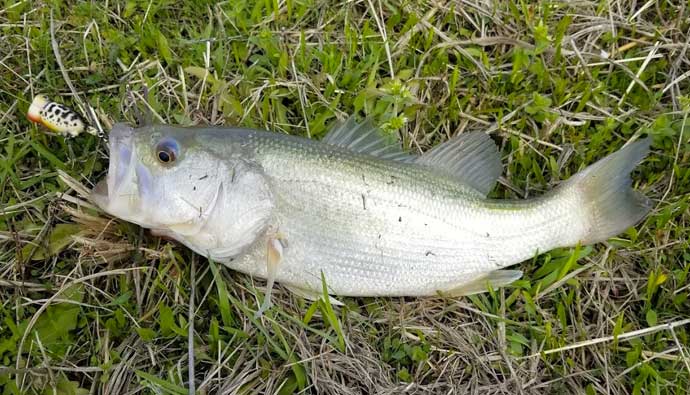
The good thing about poppers is you can take your time. Curious bass, whether they are smallmouth or largemouth bass, will float underneath the bait and watch it. Waiting for it to make any sudden movement, then blow up on the lure.
The best poppers I have personally found are the Rebel lures pop-r. They come in a wide range of colors and tend to catch most, if not all, of the bass in the bodies of water you are fishing!
As well as the Arbogast Hula Popper, these lures have been used for years and are a tried and true topwater lure that will always catch fish no matter what the condition.
Freshwater Frog Lures
Topwater frogs are a good choice when there are a lot of weeds and structures that will stop them from being fishable with normal baits due to them getting snagged.
Frogs have two recessed hooks that are in line with the body of the top of the frog that keep it from getting snagged in the brush and structure.

Frogs are also good for any time of the year as they almost always are eaten by bass all year.
Frogs can be retrieved in a number of ways, but the most popular is the constant popping wake for a few seconds, then pause for a second. As you start back with your retrieve, the bass will most likely always hit the bait when you are starting your retrieve back again.
Lunkerhunt’s combat frog is one of the best frogs I have used. Instead of the normal silicone streamer legs, the combat frog has realistic-looking frog legs that move back and forth like a real frog when it is being retrieved.
Freshwater Crankbaits
Lipless Crankbaits
Lipless crankbaits are a great way to get fish to hit deep or shallow, as they are not made only to dive a certain depth.
These lures work in most conditions as you can slow roll them or rip them quickly through the weeds and around the pieces of cover.
Lipless crankbaits create a large amount of vibration and sound when being retrieved.
They draw up almost all bass that is feeding. These lures also create the chance that you will catch fish due to a reaction strike as the bait is being moved through the water by the fish.
The best Lipless crankbait is the Rapala Rat-L Trap. These lures are one of the best lures for bass you can get on the market today. They work in any condition and will catch the big ones.
Squarebill and Shallow Diving Crankbaits
Squarebill and Shallow Diving Crankbaits are some of the best lures to use when you are fishing rip-rap or along docks.
The way you retrieve these lures is to retrieve the lure at a medium cadence until the lure hits a rock or a pillar on the docks.
Let the lure stop for a second like a baitfish that has been stunned from hitting the piece of structure.
While the lure is paused, any bass that has been watching the lure or gets startled by the sound the lure made will hit the lure, trying to make a quick meal out of the “dying Baitfish.”
Bomber makes some of the best shallow water crankbaits and square bills you can get.
Deep Diving Crankbaits
Deep Diving Crankbaits are great to use when the fish are holding deep and are not wanting to be caught using normal methods,
The method when fishing deep-diving crankbaits is to cast as far as you can and make a slow retrieve. While retrieving, if you feel a small bump, set the hook because you have a fish on the line!
Bomber also makes some of the best deep-diving crankbaits. They also come in a variety of depths and colors.
Final Thoughts on the Best Freshwater Lures
The best bait for bass fishing is going to be the soft plastic stick bait.
They can and will catch fish all year round and are the most versatile soft plastic bait being made to date.
So next time you feel like catching some fish, go out and get yourself some stick baits!
Remember also to take your child fishing! If we cannot keep the sport alive and thriving, there will be no more fishing in the future!
What do you think is the best freshwater lure? Let me know in the comments below!
Frequently Asked Questions
Q: How do freshwater lures differ from saltwater lures?
A: In some cases, there is not much, if any, difference. The most noticeable difference is size. Saltwater lures can be much larger than freshwater lures.
Q: What are the best freshwater lures?
A: We have found that soft plastics work when almost nothing else does. Topwater plugs are also a good choice, especially concerning bass.
Q: How many different types of freshwater lures are there?
A: In a word, many. There are a wide array of freshwater lures on the market today. The most common are soft plastics, topwater and swimbaits.
Q: Are freshwater lures expensive?
A: In most cases, freshwater lures are very affordable. There are some higher-end freshwater baits that cost significantly more but ultimately produce the same result.




 Facebook
Facebook YouTube
YouTube